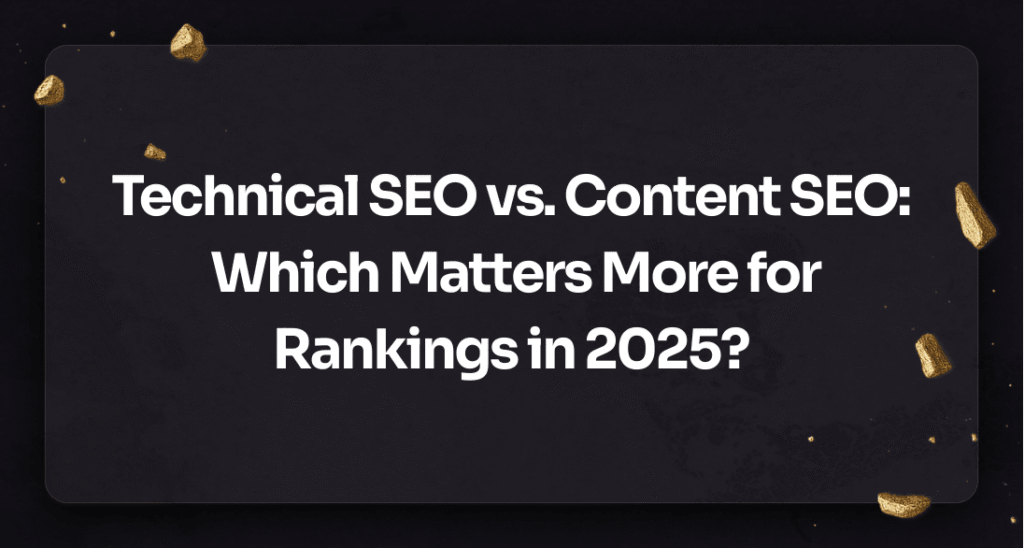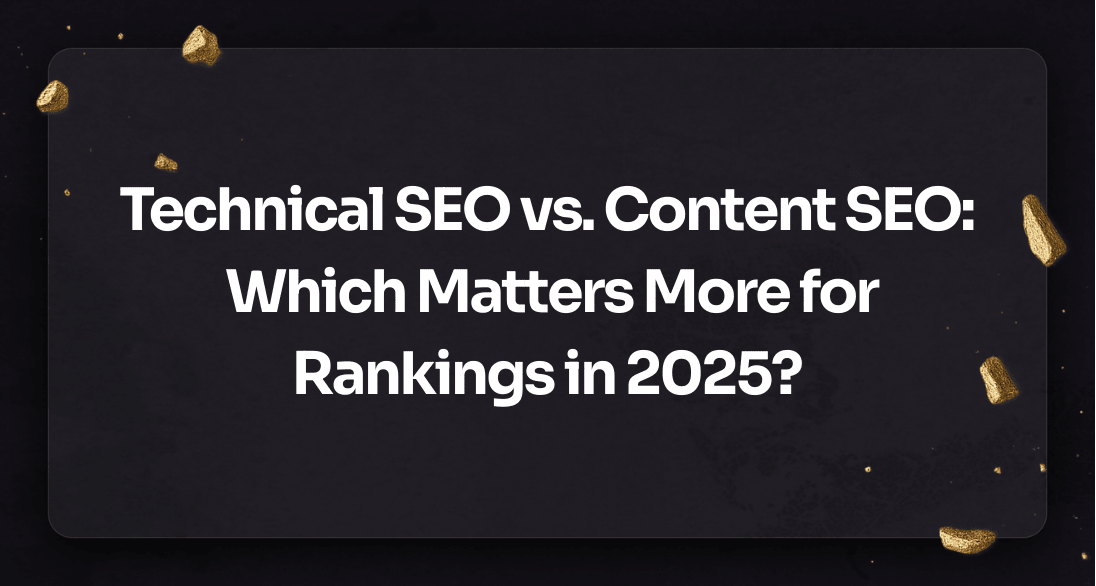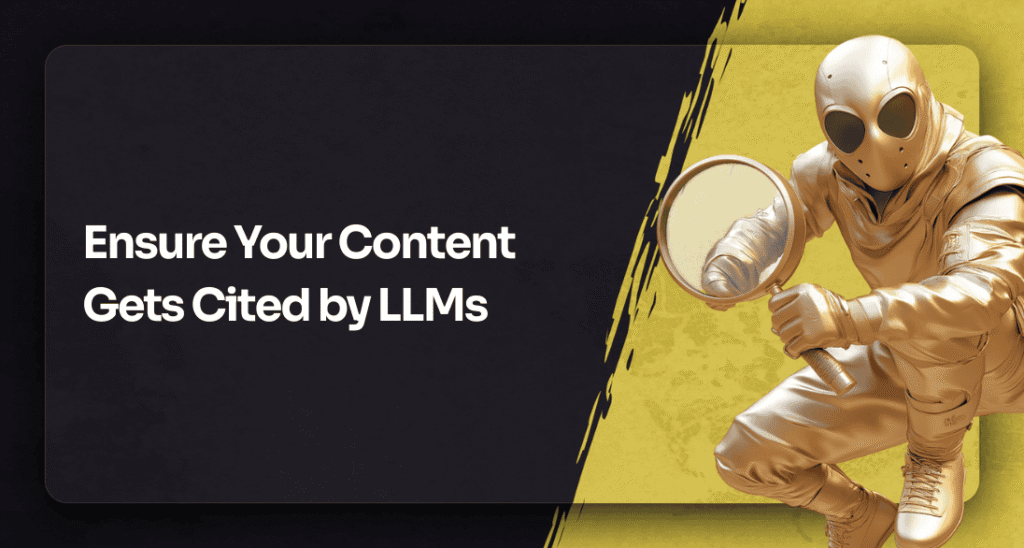Today, your site is graded on speed, structure, and content relevance all at once. To compete, both sides of SEO need to fire.
Key Takeaways
- Technical SEO is the foundation. Crawlable code, structured data, site speed. It’s how both search engines and large language models (LLMs) decide if your content can even be read.
- Content SEO is the signal. The depth, relevance, and authority that tells those systems your site deserves to be remembered - and surfaced in results or AI summaries.
- It’s never a choice between them. One makes your site accessible, the other makes it valuable.
- The real competition isn’t technical SEO vs. content SEO. It’s whether your site is strong enough to rank and credible enough to be cited by AI-driven engines.
If your site loads like it’s on dial-up, it doesn’t matter how good your blog is. And if your content is thin, it doesn’t matter how fast your code runs.
Here’s a clear way to see the difference between technical SEO and content SEO:
| Technical SEO | Content SEO | |
| Definition | The architecture of your site: speed, crawlability, indexability, structured data. | The substance of your site: keyword-targeted, relevant, and written to meet intent. |
| Role in Rankings | Foundation. If a site can’t be crawled or loaded fast, nothing else matters. | Differentiator. Once technical basics are met, content decides if you rise or fade. |
| Primary Focus | Code, infrastructure, Core Web Vitals, clean structure. | Authority, freshness, topical depth, trust. |
| Impact in 2025 | Decides if Google and LLMs can read and cite your site at all. | Decides if they choose your site as the answer worth showing. |
💡 Pro tip: Run both a technical SEO audit and a content audit before you decide where to invest. AI systems now score sites on infrastructure and authority. If one lags, the other never pays off.
👉 Want clarity on where your site stands? Explore our technical SEO services or book your free SEO consultation now.
What Is the Difference Between Technical SEO and Content SEO?
Technical SEO is the infrastructure. Crawl paths that let search engines and LLMs read your site. Core Web Vitals that measure patience in milliseconds. Structured data that translates code into meaning. It’s the foundation that decides if your site can even show up.
Content SEO is the signal. The keywords that match search intent. The topical authority that convinces algorithms your brand is credible. The freshness that keeps your site relevant. It’s the part that decides if you’re chosen once you’ve been found.
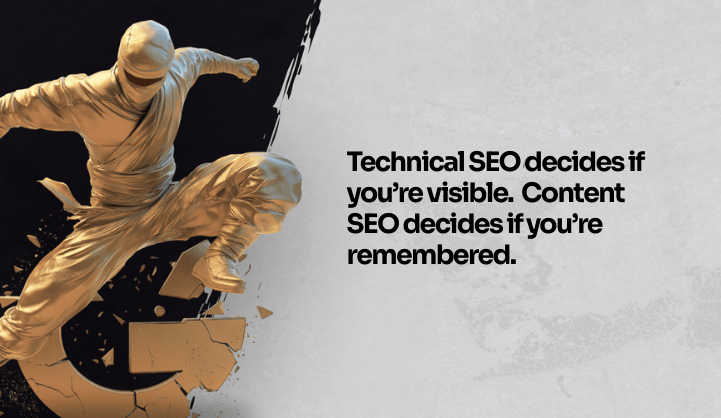
Here’s the breakdown:
| Technical SEO | Content SEO | |
| Focus | Site architecture, crawlability, indexation, Core Web Vitals, mobile optimization. | Keyword targeting, topical authority, content freshness, E-E-A-T. |
| Why It Matters | Ensures search engines and LLMs can access and process your site. | Ensures your site is relevant, trustworthy, and worth surfacing in results. |
| 2025 Lens | AI models reward structured, responsive sites with clean data. | AI models summarize sites that demonstrate expertise and user-first value. |
Technical SEO vs. Content SEO: Which SEO Type Should I Prioritize First?
If your site is slow, unstructured, or full of errors, no amount of content will fix the fact that search engines and LLMs can’t properly crawl or index it.
A solid technical SEO strategy is the entry point - the minimum requirement to get in the game. Getting that baseline right is often easier with technical SEO agencies that specialize in the setup.
If your site already performs well technically but struggles to rank or convert, the problem usually sits on the content side. You need topical depth, keyword targeting, and relevance that proves your authority in a competitive space.
When you strip it down, the choice comes here:
- Broken site = prioritize technical SEO.
- Flat traffic = prioritize content SEO.
Both matter, but sequence matters too. Technical SEO makes your site eligible. Content SEO makes it competitive.
In 2025, with AI Overviews and generative engines reshaping search, technical SEO is the price of entry.
Crawlability, speed, and structured data decide if your site is even considered. Once that’s in place, content SEO becomes the growth driver - the part that earns you rankings, mentions, and citations in AI summaries.
How Does Technical SEO Impact Rankings?
If you’ve ever asked why technical SEO is important, the answer is simple: rankings start with mechanics.
Can the crawler get in? Can the page load? Can the system make sense of it? If not, everything else is wasted effort.
The impact lands here:
- Crawlability and indexation. If your site architecture blocks crawlers or your canonical tags are a mess, your pages don’t even enter the index. It’s not a ranking issue - it’s nonexistence. Technical SEO clears the path so content can be discovered in the first place.
- Website performance. Core Web Vitals measure how fast your content loads, how stable the page feels, and how quickly a user can interact. Google bakes these into its algorithm. LLMs use them as signals of reliability. A slow site tells both systems: “don’t trust me.”
- Mobile and accessibility. Search has gone mobile-first. If the mobile version of your site is stripped down, broken, or slow, rankings collapse regardless of how well the desktop site performs. Add to that accessibility signals (alt text, semantic HTML, SSL) and you’re looking at factors that double as both ranking criteria and user trust signals.
- Structured data. Schema markup is how machines make sense of your site. A product page marked up properly can land in shopping carousels. An FAQ can be pulled into AI Overviews. With structured data, machines don’t just crawl your page - they know what it represents and when to surface it.
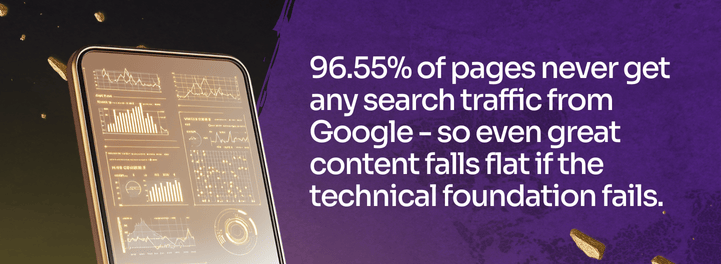
Technical SEO influences rankings because it governs three levers:
- Access → Can the crawler or LLM reach and store your content?
- Performance → Does the experience load and respond quickly enough to be rewarded?
- Interpretation → Do algorithms understand what your content means?
You can publish the best content in your space, but if one of those levers breaks, it stays invisible.
What Makes Content SEO Effective?
Search in 2025 measures authority. Pages are ranked on how well they solve intent, not how many times a keyword is repeated.
That shift looks like this:
| Traditional SEO Tactics | Modern Content SEO Factors |
| Stuffed keywords | Search intent mastery |
| One-off blog posts | Topic clusters & depth |
| Static evergreen pages | Freshness signals & updates |
| Thin “how-to” content | Authoritative resources & case studies |
| Generic bylines | Credible authorship + cited data |
Today, ranking power comes from:
- Search intent mastery. Every page has to read like the best answer, not just an answer. That means anticipating related questions and structuring content so users (and machines) find clarity, fast.
- Depth and clustering. A single post doesn’t build authority. A cluster of interlinked resources does. That’s how you move from being a random result to being the definitive source.
- Freshness signals. Static pages fade. Regular updates keep you in the rotation, showing Google and LLMs that your content still earns attention.
- Credibility factors. Proof matters. Real bylines, cited research, case studies, original data. These are ranking currency.
Strong content SEO is measurable in revenue terms: more qualified traffic, longer engagement, higher conversion. Without it, technical SEO is a house with no lights on.
Do I Need Both Technical and Content SEO?
When people ask, “Do I really need both?” they’re really asking about technical SEO vs. content SEO. The answer is that they’re inseparable
Technical SEO is building the highway - clean architecture, crawlable pages, fast load times, structured data.
Content SEO is driving cars across it - the signals of authority, expertise, and relevance that move traffic and revenue.
AI-driven search has collapsed the divide. Ranking systems no longer treat “tech” and “content” as separate checklists. They evaluate the outcome: is the page discoverable, trustworthy, and worth surfacing to a user or pulling into an AI-generated summary? That judgment pulls from both sides.
Here’s how it plays out:
- Technical signals make your site usable. Page speed, mobile optimization, and schema all act as green lights to crawlers and LLMs.
- Content signals make your site valuable. Depth, freshness, and credibility show you’re not just publishing - you’re answering.
Neglect one, and the other fails. A flawless site with thin content doesn’t convert. Authority-rich content on a broken site never makes it into the index.
When both operate together, rankings stabilize, AI engines cite you, and organic growth compounds.
How Can I Audit My Website for Technical Issues?
Understanding the importance of technical SEO starts with spotting what’s broken. Most problems aren’t hidden - you just need the right tools to surface them.
A proper audit is the backbone of any technical SEO strategy, giving you a map of what’s breaking your rankings before you waste energy on new content.
Start with crawl tools.
- Screaming Frog: gold standard for spotting broken links, redirect chains, duplicate pages.
- Sitebulb: visual site architecture, crawl depth, orphan pages.
- Ahrefs Site Audit: connects technical fixes directly to ranking opportunities.
Key checks every audit should cover:
- Indexation: are pages being crawled and indexed, or blocked by robots.txt/canonicals?
- Broken links & redirects: nothing tanks authority faster than dead ends.
- Duplicate content: fix parameter pages, trailing slashes, or thin duplicates.
- Core Web Vitals: Largest Contentful Paint (LCP), First Input Delay (FID), Cumulative Layout Shift (CLS).
- Mobile usability: tap targets, responsive design, stripped-down versions of content.
One-off audits aren’t enough. Sites change daily - new pages, new errors, new updates. Treat audits as ongoing monitoring. Schedule monthly crawls. Set alerts for Core Web Vitals drops. Keep a rolling log of fixes so you’re not repeating the same mistakes.
Pair your audit with analytics data:
- If you see high impressions but low clicks, check indexation.
- If you see high bounce on mobile, check usability.
The tools flag the issue but the data tells you what to fix first.
What Are the Best Tools for Content Optimization?
Content SEO is driven by demand and competitive gaps. But it only pays off when paired with modern technical SEO tactics that ensure the content is discovered and surfaced.
Optimization platforms:
- Surfer SEO - Shows the exact term frequency, heading structure, and content length that push competitors into top positions. Instead of “write more,” it tells you: write 1,850 words, include 14 H2s, and cover these 27 terms - that’s execution, not theory.
- Clearscope - Flags the semantic terms missing from your draft that Google expects to see in authoritative pages. You’ll know when you’ve covered “content optimization,” but forgot “entity SEO” or “semantic relevance.”
- MarketMuse - Scores your entire domain against competitors to reveal content gaps. If you’ve got 5 articles on “technical SEO” but none on “log file analysis,” it calls that out before rankings stall.
- Frase - Pulls the outline straight from what’s ranking now and builds a draft around it. If position #1 uses “definition → use cases → pros/cons,” you’ll know before you start typing.
Research tools:
- Ahrefs / Semrush - Still essential for keyword research, SERP analysis, and tracking movement. Use them to validate demand before you write.
AI scoring & feedback:
Most of these platforms now plug in AI models to score content against top-ranking pages. That means instant checks for coverage depth, readability, and intent alignment - before your article goes live.
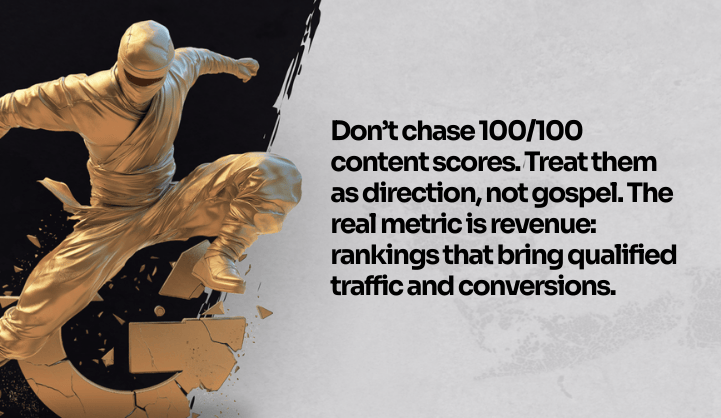
How Does Site Speed Affect SEO?
If a page drags past 3 seconds, you’ve already lost half your visitors. Rankings drop because engagement drops. LLMs read it the same way: slow site = low trust.
The Core Web Vitals that get scored:
- Largest Contentful Paint (LCP): How fast the main content shows. Benchmark: under 2.5s.
- Cumulative Layout Shift (CLS): Does the page stay put, or does it jump while loading?
- First Input Delay (FID): Can a user interact immediately, or do they sit there waiting?
In plain numbers:
- 1s delay = ~7% hit on conversions.
- Poor CLS = lower engagement and repeat visits.
- Slow FID = Google assumes bad UX, so your rankings slide.
Fix it or pay the penalty:
- Compress images, serve WebP.
- Lazy load below-the-fold content.
- Push static assets through a CDN.
Faster pages don’t just “feel better.” They rank higher, convert more, and keep users around.
What Role Does Content Play in Search Intent?
Search in 2025 is intent-driven. Google and LLMs aren’t matching strings; they’re mapping meaning. If your content doesn’t read like the best possible answer, it’s invisible.
Where content SEO wins:
- Anticipating the next question. A single page should resolve the query and open the door to related ones. If a user searches “CRM for startups,” they’ll likely want pricing models, integrations, and onboarding steps. Cover them before they bounce.
- Structured delivery. FAQs, semantic headings, and tight internal links signal clarity. Machines reward content that’s easy to parse and humans reward it with time on page.
- Clustered authority. One article rarely secures trust. A hub with interlinked spokes builds topical authority that algorithms can’t ignore.
Search intent isn’t abstract, you can map it directly to how people move through the funnel.
Here’s how it plays out in practice:
| Funnel Stage | User Intent | Best Content Types | Conversion Goal |
| Top-Funnel | Learn, explore, define problems | Educational blogs, guides, explainer videos | Build awareness, capture attention |
| Mid-Funnel | Compare options, evaluate solutions | Comparisons, use cases, how-tos | Nurture interest, position authority |
| Bottom-Funnel | Validate choice, prove ROI | Case studies, demos, pricing pages | Drive purchase, close decision |
Treat every piece of content as an on-ramp to conversion. Pageviews alone don’t move the business - pages that guide buyers from query to purchase do.
How Often Should You Update Your SEO Strategy?
Search doesn’t stand still. Neither can your SEO. AI-driven updates are rolling out constantly, reshuffling what ranks and why.
That’s why quarterly reviews aren’t “best practice” - they’re the minimum barrier to survival.
Moments that force a strategy update:
- Algorithm rewrites. One push from Google can flip entire SERPs.
- Traffic shifts. A sudden dip is a signal to dig in and fix.
- AI features. When new answer boxes, overviews, or summaries appear in your space, you adapt or disappear.
The mindset is simple: monitor continuously, adjust deliberately.
Quarterly reviews set the direction, but the weekly metrics tell you when to move.
If your SEO playbook still looks the same as it did a year ago, it’s time to rewrite it.
Wrap Up
The debate around technical SEO vs. content SEO misses the point. They were never meant to be rivals. One gets you seen, the other makes you worth remembering. Neither can carry the weight alone.
Search and AI systems don’t grade them separately anymore - they read the whole picture. If the code breaks, the content never gets noticed.
That’s the reality: treat them as multipliers. Fix what blocks you from being found, then keep shaping content to match intent. Revisit both, often. That’s how you stay in the conversation when the rules keep changing.
The real edge in 2025 comes from adopting innovative technical SEO concepts early - structured data, AI-ready site architecture, and technical fixes that don’t just satisfy crawlers but earn trust from generative engines.
👉 Start with a technical SEO audit. See where your site is slowing you down, where your content isn’t connecting, and build from there.
Frequently Asked Questions
What is the difference between technical SEO and content SEO?
Technical SEO is about site infrastructure—speed, crawlability, structured data. Content SEO is about authority—relevance, keywords, and topical depth. Both are essential to ranking.
Which should I prioritize first: technical SEO or content SEO?
If your site is broken, start with technical SEO. If it’s healthy but traffic is flat, prioritize content SEO. Sequence matters, but both need to work together.
How does technical SEO impact rankings?
It governs crawlability, site speed, mobile usability, and structured data. Without these in place, content can’t even be indexed.
What makes content SEO effective?
Search intent mastery, topical clusters, freshness, and credibility—all of which signal to search engines and AI that your content is worth surfacing.
Do I need both technical and content SEO?
Yes. One makes your site discoverable, the other makes it valuable. Neglect either, and rankings will stall.
How can I audit my website for technical SEO issues?
Use crawl tools (Screaming Frog, Sitebulb, Ahrefs), check Core Web Vitals, and monitor indexation. A regular audit exposes issues before they impact rankings.
What are the best tools for content SEO optimization?
Surfer, Clearscope, MarketMuse, and Frase are leading platforms for optimizing relevance, coverage, and competitive positioning.
How does site speed affect SEO?
Over half of users leave if a page takes longer than 3 seconds to load. Google’s Core Web Vitals use speed as a ranking signal—slow pages lose traffic.
What role does content play in search intent?
Content SEO matches queries to solutions. The best pages anticipate related questions, provide depth, and guide readers down the funnel.
How often should I update my SEO strategy?
At least quarterly—but ideally, ongoing. Algorithm updates, traffic shifts, and new AI features mean SEO can’t be “set and forget.”

